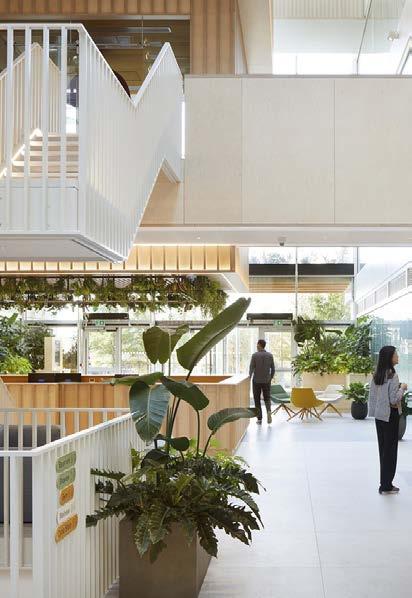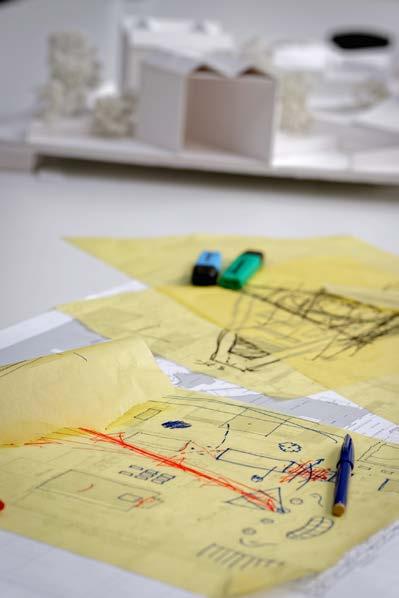Who We Are
We keep things human, and we think carefully about how a space will make people feel. We’re passionate about the way people interact with space through built form. Buildings and spaces give us the opportunity to live healthy, sustainable lives.
https://www.aww-uk.com/practice/who-we-are

‘Architecture allows us to take responsibility for our environment, while providing delight and improving people’s lives.’

We take our responsibilities seriously. The built environment shapes everyone’s worlds. We want everything we do to have a positive legacy, and we’re mindful of how our work will stand the test of future generations.

‘We help people navigate uncharted journeys, taking them beyond their ambitions and enhancing the wellbeing of everyone who is touched by the results.’

ESG Policy Page 5
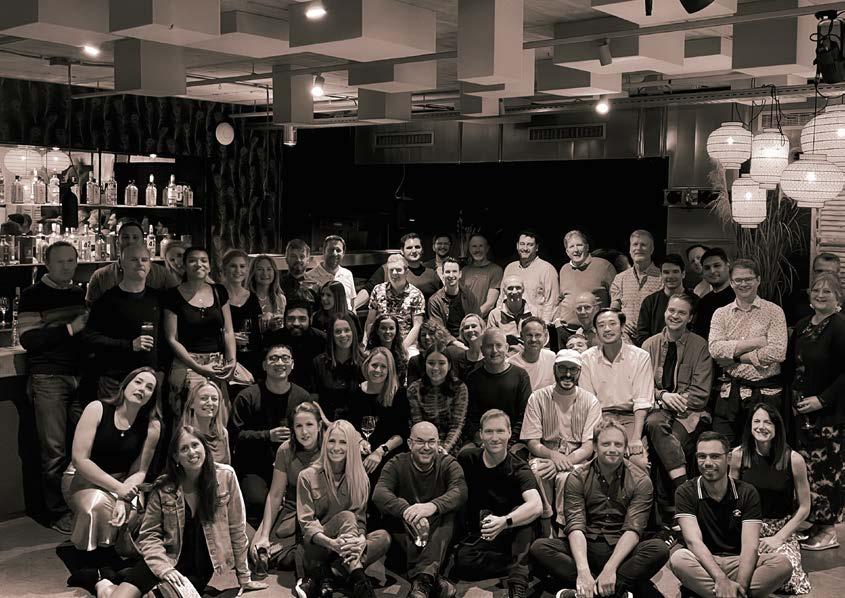
We Are An EOT
We are a close knit, talented, creative team and together we’ve built a supportive, human-centred way of doing business. As a collective we challenge the norm and dare to dream.
We are proud to be an Employed Owned Trust (EOT). In becoming an EOT we are able to further encourage innovation, participation, collaboration, responsibility and business development from everyone of us.
ESG Policy Page 6
PRACTICE PROJECTS

Our offices, employees, and supply chain partners
ENVIRONMENTAL GOVERNANCE SOCIAL
Office operations including energy consumption, travel, waste management, regenerative practices
The projects that we design & deliver, & the people that we deliver them for
The whole life impact of our projects including embodied & operational. Natural resource & habitat impact
Employee health & wellbeing, equality, education and training, contribution to our local communities
The Social Value impact of our projects during design, construction and in use
Policies and practices pertaining to our mission, ethics, accountability and transparency
The policies and practices pertaining to our projects, our reporting, and disclosure on their performance
A simplified definition of all aspects of AWW in order to help structure our ESG framework. ESG Framework AWW have committed to a science based target carbon reduction through the SME Climate Hub, and are signatories of RIBA 2030 Challenge & Architects Declare AWW Commitment Covers Practice Covers Projects Metrics Architects Declare ✓ ✓ RIBA 2030 Challenge (Alignment with LETI guidance & relevant UNSDG) ✓ ✓ UN Race to Net Zero (Via SME Climate Hub & relevant UNSDG) ✓ ✓ Social Value Quality Mark ✓ ✓ ✓
ESG Policy Page 7
DESCRIPTION
The measurement, monitoring, auditing and continual improvement of AWW's ESG activity is key.

All Social Value commitments on every project are a core part of our ISO9001 certified IMS project plan, with project architects working with the client at the outset to set measurable and reportable pledges, KPIs and KVIs to deliver Social Value.
AWW design teams are supported in this by AWW’s ESG Group, led by Director Tim Forster, who reports back to the Board on our progress as a practice.
Our bi-annual staff appraisal and surveys are important to assess the wellbeing and satisfaction of our staff. These qualitative approaches sit alongside our external audits which encompass BM Trada’s regular reviews of our ISO9001 and ISO14001 certifications, part of our rigorous Business Management System.
We report on our impact annually through our externally published Social Value Impact Report and Carbon Footprint Report to ensure transparency and accountability.
We have recently developed an Intelligent Spreadsheet aligned to Social Value Model, National TOMs and Wellby to more effectively define our impact. This will form a critical part our approach as we progress in our Social Value journey and enable us to report more regularly on our contributions.
ESG Policy Page 8
Measuring and Reporting
Measuring and Reporting
The use of internal reporting is key to ensuring ESG goals are achieved. As part of our Internal Management System regulated by ISO 9001 and ISO 14001, we:
• Record annually against our ESG Toolkit for our actions and operations as a practice and through our projects with independent auditing by external consultant
• Use BIM data to capture project metrics
• Use in-house operational and embodied carbon design tools to value-assess design decisions
• Audit Social Value Impact at key project stages (Monitored via AWW Social Impact Tracker)
• External reporting to RIBA 2030 for key projects (Client agreement is required)
• Post Occupancy Evaluations on projects
Sustainability
Post occupancy
Discuss the Sustainability & Regenerative design approach, Social Value Impact aspirations and strategies, assess progress, involving the client’s teams, consultants

Use
Assess / measure at each design stage:
Energy in use model that will be updated during design at each stage + embodied carbon analysis. External consultant or in-house modelling dependant on stage and project. Conduct Social Value design reviews at key project stages. Use of AWW Social Impact tracker to record metrics. Eraly stakeholder engagement where feasible to inform design.
Engage with contractors at early construction stages through on-site workshops to discuss issues such and airtightness, waste management, re-use of materials etc. Clarity of drawings to ensure achievable and minimal waste. Understand Contractors Social Value goals to establish opportunities for collaboration in delivering Social Value. Communicate project Social Value targets and set methodology for delivery and recording.
Engage contractors during construction stage and at commissioning stage to become invested in the low energy use concept
Create and maintain close relationship with management team, and work together to assess performance in use, user satisfaction after completion. Soft landings approach with users
Energy monitoring (electricity, gas) + water use monitoring Indoor environ parameters monitoring (temperature, C02, relative humidity, (AQ) + BUS survey + reporting to client/ lessons learned to design team. Promote targets and achievements to the wider public through agreed method with Client team.
Post Occupancy Evaluation surveys sent to client and end users with follow-up interviews conducted. Social Value Impact report completed (where required by client).
Value
to
Value
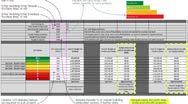
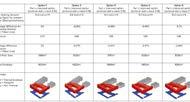
RIBA Stage
RIBA Stage
Stage
RIBA Stage
Stage
7
6 RIBA
2-4
5 RIBA
0-1
STAGE
PROJECT
and Social Value workshops
targets + client requirements
in design Workshops with Contractors
landings
Setting
Implement
Soft
evaluation & knowledge sharing + media promotion OUTPUT & TARGETS
Passivhaus team: Operational Carbon
studies for early stage design value-assessment
AWW Sustainability Handbook In-house
design
AWW Embodied Carbon Design Tool
highly satisfied satisfied £231.00 £0.00 £0.00 £0.00 £0.00 £0.00 £0.00 -£231.00 highly dissatisfied £0.00 £0.00 £5,200.00 £0.00 £0.00 £0.00 00 p Total £0.00 Stage Question SV outcome Social Value Proxy Source Social Value proxy (outside London) Social Value proxy outside London) Number of responses (££ no.) DeadweightImpact figure Impact figure minus additionality Sub Totals Stage 1-4 A h D D U S p a g e Stage 1-4 Followed LETI design guidance Yes (1) /No (0) £1.00 £0.00 £0.00 Stage 1-4 List any achieved BREEAM Excellent or Outstanding for new construction and similar, Passivhaus, LEED, Yes (1) /No (0) £1.00 £0.00 Stage 1-4 Followed or achieved certification for interior space (e.g. WELL rating) Please indicate the level Yes (1) /No (0) £1.00 £0.00 £0.00 Sta 1-4 band National TOMs £217.00 £0.00 £0.00 Stage 1-4 Stage 1-4 bands £868.00 £0.00 £0.00 Sta £1,085.00 £0.00 £0.00 Stage 1-4 bands £1,302.00 £0.00 £0.00 Stage 1-4 access to wellbeing programmes for at least 12 months No. employeesNational TOMs Reduction loneliness per person as result within workforce. This assuming point shift in point scale on loneliness. Social Value Bank/ Loop Interventions delivered to the community that improve their general health. Social Value Bank/ Loop Use own garden No. individuals impacted Social Value Bank/ Loop Use urban green space impacted Loop £25,092.22 Stage 1-4 Supporting local arts and culture through the design - communities be delivered on the contract e.g. codesigned with stakeholders or communities invested inc time, materials, equipment Stakeholder engagement and consultation events. Social Value Bank/ Loop Initiatives taken to support older, disabled and vulnerable people to build stronger community networks. Direct ValueNational TOMs £1.00 £1.00 £1.00 Stage 1-4 decarbonisation ainst ecific benchmark. Stage 1-4 strate ies? Yes (1) /No (0)National TOMs £0.00 Target energy efficiency improvements (by number of bands) Human Centric Buildings Health Wellbeing Social Community workplace use community Previous Building Social Value Impact New Building Social Value Impact Uplift quality of the finished building (s)? 0.00 £0.00 £0.00 civic development Use Social Value Design Reviews and Social Value Impact Tracker to help guide and to capture data throughout all project stages
AWW Project Plan (IMS08) to capture key design review dates
AWW Social Impact Tracker
Update
client guidance.
guidance and local policy guidance.
AWW Sustainability Handbook for
Refer to LETI
weighting
Engineer: Use AWW Embodied Carbon assessment tool
review element
and to help inform key design decisions (e.g. extent of demolition). Tool is aligned to LETI A-G.
analyse
facade
early stage
massing
AWW POE proformas to capture Social Value data. Client Workshop Agreed targets will become part of the Employers Requirements and will be followed through each design stage and up to completion
Engineer: Use PHPP and Design PH to
form factor and
at
form and
studies. Use
ESG Policy Page 9

